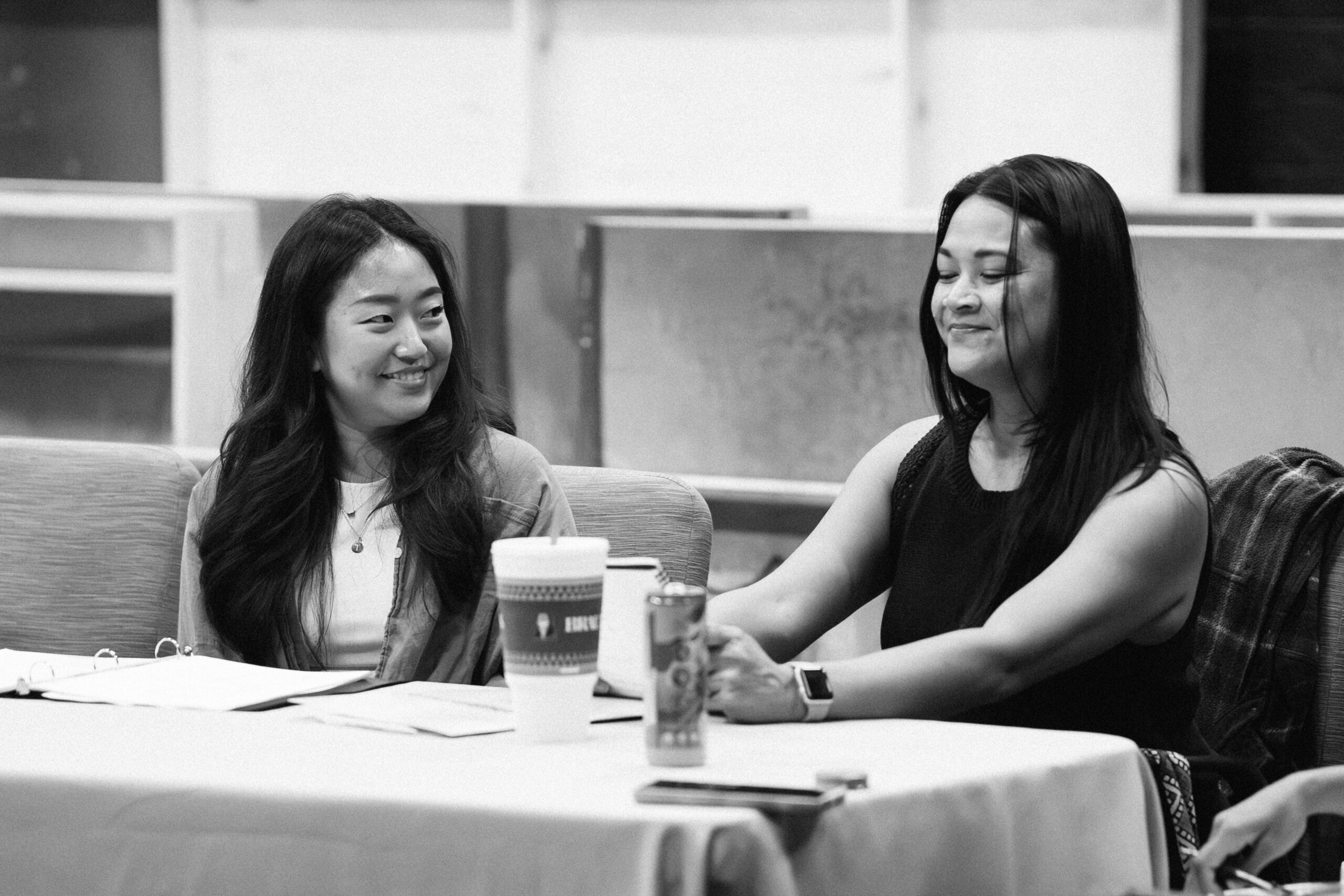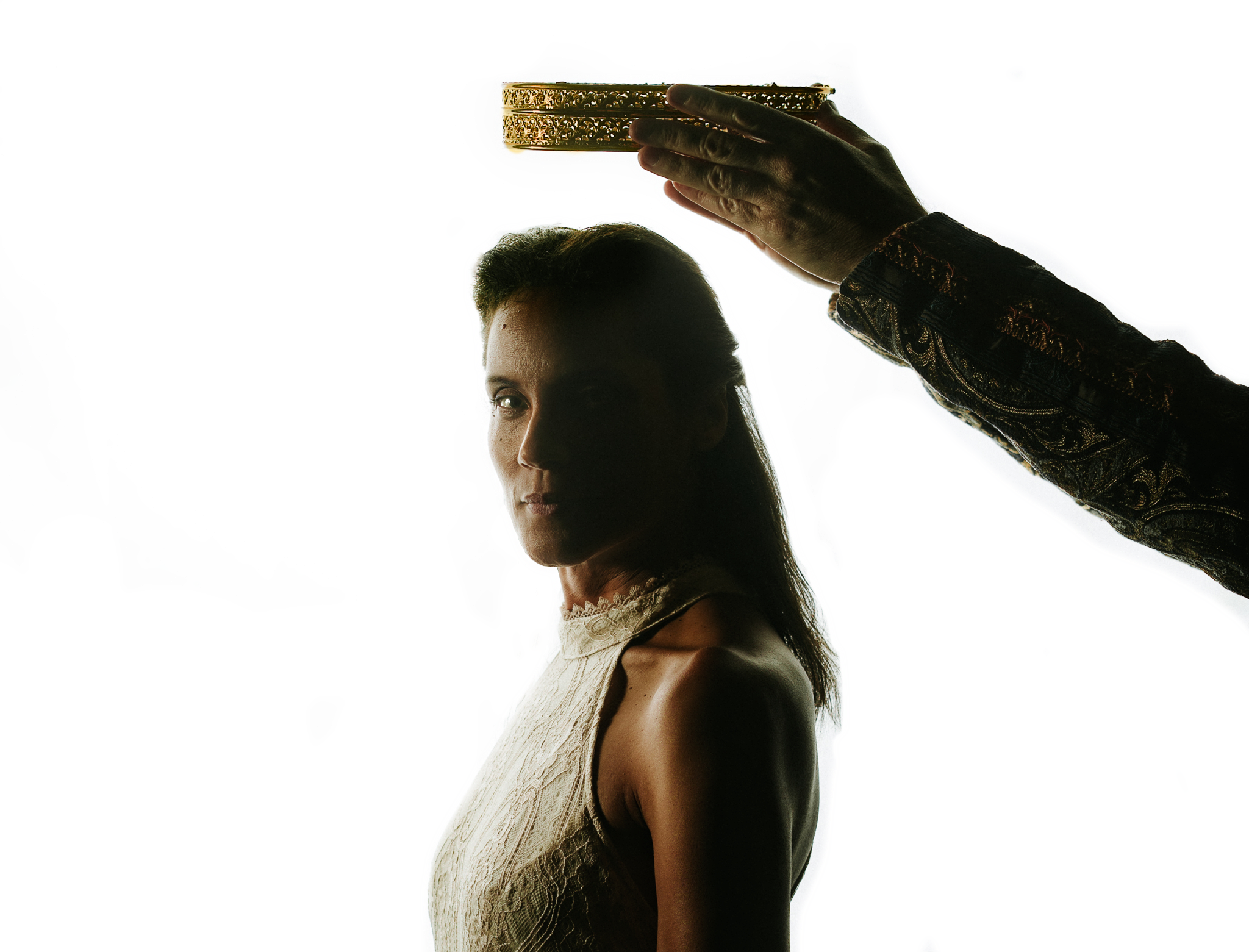Originally posted on Theater Jones.
Fort Worth — Seldom has there been a woman as badly in need of a good PR person as Shakespeare’s Queen Margaret of Anjou, the so-called She-Wolf of France. Despite being the only character in Shakespeare’s canon to hold the Bard’s interest enough to appear in four consecutive plays (jolly Falstaff appears in three, but only gets a shout-out in a fourth), scholars and directors have historically either dismissed her, to the point of cutting her out of Shakespearean productions altogether, or vilified her. Stephen Greenblatt speaks of Margaret’s “sadistic pleasure” and “savage cruelty” in his Shakespearean biography Will in the World, while Angela Pitt says of Margaret in her 1981 Shakespeare’s Women that Margaret is “the most relentlessly sustained symbol in Shakespeare of all that is unnatural.” Only very recently has an effort been made to effect a rehabilitation of poor Margaret, similar to that of her nemesis, Richard III. My kingdom for a Josephine Tey novel!
But into that breach, thankfully, have stepped Stephan Wolfert and Dawn Stern, who’ve adapted Shakespeare’s tetralogy to put Margaret’s story into the spotlight in this world premiere production. She-Wolf: The Story of Margaret of Anjou, developed with Amphibian Stage under the enthusiastic auspices of Artistic Director Kathleen Culebro, follows Margaret (played by Stern, whose acting résumé runs the gamut from stage to screen, and who is also Wolfert’s spouse) from her battlefield ransom/engagement to King Henry VI at 15, to her wranglings as a young, immigrant queen with the “nest of vipers” that makes up her husband’s court, to her taking command of her husband’s forces on the battlefield in some of the bloodiest battles of the Wars of the Roses. Wolfert, last seen at Amphibian Stage with his one-man show Cry Havoc!, which as part of Wolfert’s De-Cruit program, explores Wolfert’s own experiences as a military veteran through the lens of Shakespeare’s portrayals of soldiers, wears multiple hats for this production — co-adapter, director, and actor. The result is revelation: a complex, flawed female Shakespearean character who not only wrestles with policy matters, but leads armies into battle (and gets some of the best lines?). Where has Margaret been hiding?
Wolfert and Stern’s adaptation plucks Margaret’s story out of the Henriad (Henry VI 1, 2, and 3), as well as select lines from Richard III, and takes us through her tumultuous rise and precipitous fall. Margaret, a girl of 15 and a French princess, is found wandering a battlefield by the Earl of Suffolk (James Edward Becton), who then captures her for ransom. Struck by her beauty, the (married) Suffolk schemes to not only keep Margaret close at hand, but to use her for political gain, so he proposes that she marry the twenty-two year old King Henry VI of England (Drew Ledbetter). Recognizing her precarious position, Margaret agrees, and is married to Henry. Unfortunately, Henry is a weak, timid king, who still allows his uncle, Gloucester (Wolfert), to rule in his place as Protector of the Realm. Suffolk and Margaret, who has since borne Henry a son, scheme with the Duke of York (Wolfert) — Richard III’s father — to bring down Gloucester. They succeed, but Suffolk, now Margaret’s lover, is banished and later killed. Bullied by the scheming York, Henry cedes his son’s right to the crown after him. Enraged at her husband’s cowardice, Margaret and her son Edward (Becton) take up arms against the Yorkist faction and, after bloody conflict on the battlefield, York and his armies prevail, and Margaret, having lost everything, is banished.
Stern is electric as Margaret, playing her with a loose-limbed, modern physicality and a seething anger bubbling underneath. She doesn’t shy away from the character’s emotional extremes, most notably in her anguished farewell scene with Becton’s Suffolk, and in the climactic scene with Wolfert’s York, where, lost to what Wolfert in an interview with TheaterJones dubbed “berserker” rage, she taunts the injured Duke with a handkerchief soaked in his son’s blood. Hard to stomach now, and impossible in Shakespeare’s day, but Stern doesn’t let up for a moment. As the smooth-talking Suffolk, Becton walks a difficult line in his initial scene with Margaret — he is, after all, a married man who has the hots for his teenage prisoner — but manages to keep the character respectfully lusty, for the most part.
That being said, if there’s a flaw in this production, the seeds can be found here. The relationship between Margaret and Suffolk is key to the emotional life of this play. As Shakespeare was still finding his way towards portraying character’s internal life at this point in his career, it can be difficult to find in the text, so onstage character work must do the heavy lifting. In speaking with TheaterJones about the play, Stern sees Margaret and Suffolk as having an “immediate, profound connection” in this moment. But onstage it reads more as lust on Suffolk’s part and pragmatism on Margaret’s — she’s Suffolk’s prisoner. What can she do but submit? Later scenes do not do enough to fill in the gaps, and as such, the tear-soaked farewell between the two, although wrenchingly played by both actors, comes a bit out of left-field, at least as per this play’s own internal logic. But this is the sort of dissonance that can be solved as the piece develops on its way towards its 2021 off-Broadway run.
Wolfert, in addition to adapting and directing the play, portrays the most characters — Margaret’s father Rene, the pious Gloucester, duplicitous York, and several others — and clearly relishes the opportunity, making each character distinct through a combination of physicality and accent work (kudos to dialect consultant Krista Scott). While portraying Margaret’s father Rene, Duke of Anjou, Wolfert’s French accent teeters amusingly towards the cartoonish without tipping over, while his gleeful, gossipy King Louis XI of France boasted what to this reviewer sounded more like a French-Canadian accent (a tip of the crown to Wolfert’s connections in Saskatchewan?). He and Becton make much of their limited scenes together as Gloucester and preening wife Dame Eleanor, who Becton plays with an amusing RuPaul’s Drag Race energy and much outraged fan-snapping. And Wolfert’s doomed Gloucester and Drew Ledbetter’s feckless King Henry, wide-eyed and essentially useless, have a few nice moments. But it’s the Duke of York that gives Wolfert his true opportunity to shine, playing the nobleman with a sort of feral intensity underneath his scheming. His final scene on the battlefield with Margaret as she gleefully taunts York with the death of his son, is a masterclass in restraint; you can feel the character holding himself back moment by moment, not giving Margaret the satisfaction of his tears, until he finally snaps and pours out vitriol.
The scenic design from Clare Floyd DeVries, whose work is well-known to theatergoers throughout the Dallas-Fort Worth theater scene, is sparse, but striking: a golden throne, flanked by lions, but with a hole at its heart, sits center stage below a crimson banner with golden lions and flanked by pale blue silk banners separated by wooden poles, suggestive of blockades or barricades. The throne itself serves multiple purposes — not only does it serve as prop and costume storage and as thrones in multiple locations, but its shattered, patched state is suggestive of the civil war ravaging Henry’s England and setting brother against brother. The sound and lighting design, from resident sound designer David Lanza and Adam Chamberlin, respectively, work seamlessly to delineate spaces on the minimalist stage. I particularly enjoyed the narrative heavy-lifting done by a series of lighting effects that created snapshots of Margaret and Henry’s early marriage and the birth of their son.
And, not content to simply shepherd the production along, Artistic Director Kathleen Culebro also designed the costumes for the piece, making interesting use of color and pattern as character signifiers. Margaret, clad at first in a simple shift, is dressed onstage in a beautiful ivory jacket with trailing sleeves and an overskirt tying in the front, but the addition of a cloak with trailing ribbons at the neck was visually distracting; once it was removed later, the look was greatly improved. I also enjoyed Margaret’s transition into battle-gear, with her skirts tucked up into makeshift pantaloons, and a shimmering waistcoat suggestive of armor, but still retaining a certain feminine air.
Not to radically switch art forms, but this work, pulling Margaret through the thicket of Shakespeare’s words and placing her center stage, brings to mind nothing so much as Michelangelo’s description of his sculpting process: “The sculpture is already complete within the marble block, before I start my work. It is already there, I just have to chisel away the superfluous material.” Wolfert and Stern have deftly chiseled away at Shakespeare’s work — an audacious undertaking in and of itself, reworking Shakespeare — to reveal what was always underneath: Margaret, in all her complex glory.



